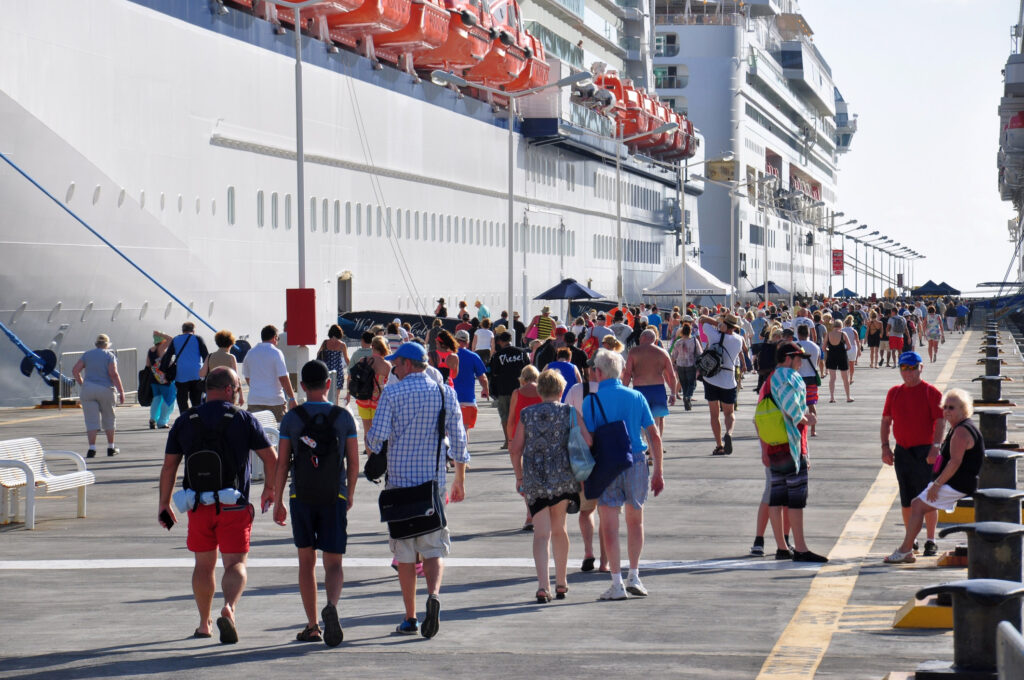
Be prepared for dialogue
My friends returned from their third Caribbean cruise earlier this year. They said that they enjoyed it immensely. In discussion I realised that they went ashore at only one destination. It was just more comfortable to stay on the ship, where it was now less crowded and cooler, for the air conditioning, they said.
Too many persons ashore at the same time tend to make small ports look and feel exceedingly tiny. When several thousands of cruise passengers disembark at about the same time, whole sections of town will slow to a crawl. And this is true in Europe as it is in the Caribbean. Except, this year, following a hurricane season that caused more destruction than many can remember, those small Caribbean ports that were unaffected and left intact by the cyclones may get even more cruise traffic than was initially scheduled, thanks to re-routing and temporary re-scheduling.

Cruise ships cram ports
Jane Archer, writing for the Telegraph (UK) recently stated: “I have visited Grand Cayman (population 49,500) in the Caribbean when four ships, each with more than 2,000 passengers on board – mine had 4,000 – descended at once one morning. The main tourist attraction, Stingray City, where you can walk in the water with these Frisbee-like fish, was more like a Disney theme park in high summer. It was even worse in St Thomas earlier this year – six ships, each with capacity for well over 2,500 passengers jostling for space in the tiny capital of Charlotte Amalie.”
The fact is, no one, cruise passenger or local, likes the extreme congestion and confusion of too many persons landed in the same port at the same time. However, most accept that reality as a necessary evil. ‘It’s good for the economy so accept it.’
But, is it good for the local economy? If cruise passengers find it increasingly more comfortable to stay on the ship while in port, how does that help the local economy and provide an income for itinerant vendors, ground transportation providers, attractions operators, restaurateurs, et al.?
If local governments and cruise destination authorities do not want to discuss overcrowding, for fear of having to discuss dislocation and local economic fallout, well, the cruise lines are apparently less shy about talking about it. CLIA Europe’s general secretary Tom Fecke was quoted as saying he was ready to discuss these issues with ports and destinations but that many destinations wanted to receive more cruise ships and passengers, not fewer.
Cruise lines have a responsibility to their shareholders, to make as much profit as is possible, from the totality of investments made. However, if the ecology supporting cruise ship destinations is not sustained, with the balances in nature that made these idyllic ports enchanting and romantic, then all that was invested in real estate development and technology would be at risk.
The cruise industry appears ready to discuss sustainability issues and how to manage large-scale passenger flows and overcrowding at popular destinations. Those that control or manage Caribbean cruise destinations should get prepared for this dialogue, with studied solutions for the problems of overcrowding that are already plainly visible across the region. []
- First published November 1, 2017






